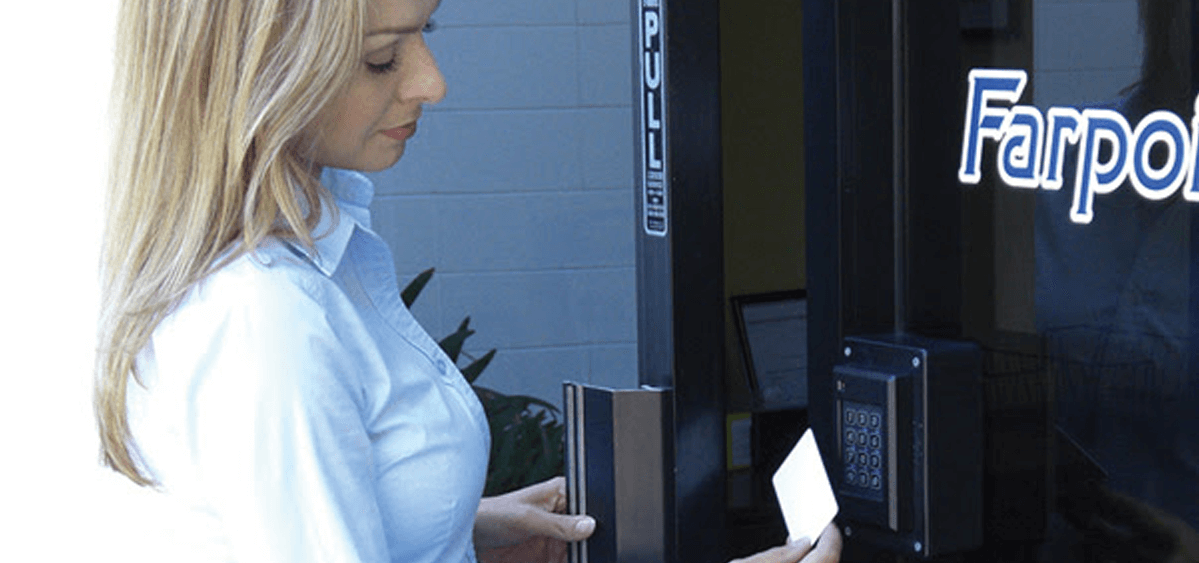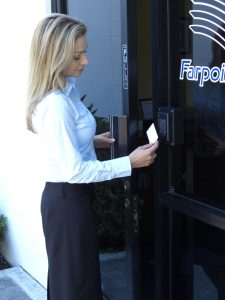

ACCESS CONTROL READERS AND CREDENTIALS have certainly come a long way in the past decade. The technology has now almost completely replaced traditional locks and keys, and the variety of products available is vast.
“Readers and credentials have become a part of our everyday life, though some might not even realize it,” says Brian Marris, product manager of readers, controllers and credentials at Allegion, Carmel, Ind. “When you check into a hotel, you expect to receive a plastic card or to be able to load a mobile credential to your phone. If you were handed a brass key for your hotel room, you would be surprised. … Most large corporations leverage physical credentials. Universities are moving … to physical or mobile credentials. Healthcare facilities have been using physical credentials for access and identification for years.”
Opportunities abound for security integrators and dealers in the credentials and readers space. As Marris points out, the market is getting smarter, and with that, it’s realizing the access control technology that’s been around for years is outdated.
“Historically, a credential was simply a card that came with an access control system — not much thought was put into the credential itself,” says Lisa Corte, director of product management, access and egress hardware group, ASSA ABLOY Opening Solutions America, New Haven, Conn. “Today, with the increased capabilities of access control systems and credentials, there is greater flexibility to choose the credential that works best for the needs of each facility. There is also much greater flexibility in the form factor of the credential. From the traditional card to the mobile phones and wearables, a credential can exist in many forms.”
Readers and credentials have evolved even more in the past year, as manufacturers worked to provide solutions for the “new normal.”
James Segil, co-founder and president of Openpath Security, Los Angeles, says that his team has tweaked many of their capabilities to be more relevant in a post-COVID-19 environment. “We’ve put a lot of capabilities in place to help with social distancing and to help enforce some of the rules put into place,” he says.
While analytics are one way in which access points can be better utilized during the pandemic, an increased awareness around germs has brought about a push for touch-free credentials and readers.

The issue of returning to work after the pandemic has accelerated the improvement of credentials and readers.
MAGE COURTESY OF FARPOINTE DATA
“COVID-19 has had a major impact on the reader and credential market,” Marris says. “Today, the market is evaluating ways access control systems can not only provide a more seamless experience, but a touchless one — all while maintaining increased security, of course. Everyone wants people to be able to move securely through doors with [fewer] touchpoints.”
And as all of these changes happen in the market, end users are becoming more informed about their options, meaning the security systems integrator needs to be more informed than ever.
“End users have become much more educated on how reader and card technologies work,” says John Becker, vice president of global sales, AMAG Technology, Hawthorne, Calif. “Ten years ago, the perception was that proximity was secure, and now the perception is that it’s not secure — people are realizing there are unsecure technologies. There are also expectations from customers that readers will support technologies like high-frequency cards and mobile, and potentially biometric as well.
“Customer expectations have increased. If a customer wants a combination of cards and mobile, for example, they know they can have this now and won’t settle for just what an integrator or manufacturer suggests.”
The migration away from proximity cards has been happening for a while now, but the pandemic has pushed fast forward on the move.
“If the question is what people are going to use going forward, I just can’t imagine we’re going to continue to see a lot of prox, or at least a lot of prox by itself,” says Jeff Nirginy, CEO, CertiPath, Reston, Va. “There will be a big push to what we’ve been seeing in Asia, with this cultural germaphobia.”
Cybersecurity concerns have also increased throughout the pandemic, and it’s become clear even to end users that many proximity cards can be easily cloned.
“Current RFID devices, particularly those operating at 125 kHz, are not suitable for secure identification,” says Scott Lindley, general manager of Farpointe Data, San Jose, Calif. “Proximity credentials that operate at 125 kHz are vulnerable to cloning. Credential holders have easy access to devices that make copies of their cards at retail stores, or they can purchase an inexpensive card cloner online. This allows copies to be given to unauthorized individuals who then gain entry using that employee’s identity.”